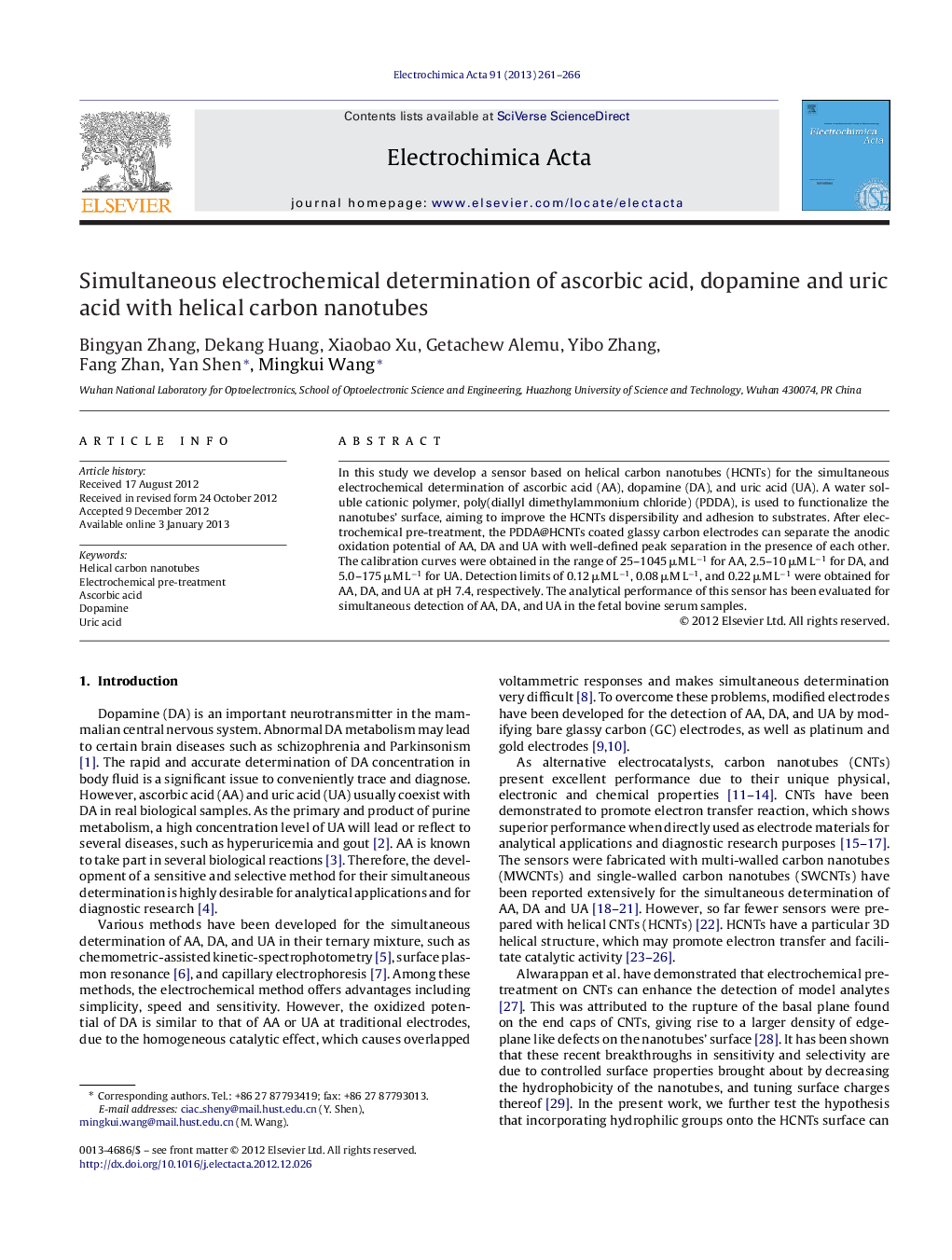| Article ID | Journal | Published Year | Pages | File Type |
|---|---|---|---|---|
| 187002 | Electrochimica Acta | 2013 | 6 Pages |
In this study we develop a sensor based on helical carbon nanotubes (HCNTs) for the simultaneous electrochemical determination of ascorbic acid (AA), dopamine (DA), and uric acid (UA). A water soluble cationic polymer, poly(diallyl dimethylammonium chloride) (PDDA), is used to functionalize the nanotubes’ surface, aiming to improve the HCNTs dispersibility and adhesion to substrates. After electrochemical pre-treatment, the PDDA@HCNTs coated glassy carbon electrodes can separate the anodic oxidation potential of AA, DA and UA with well-defined peak separation in the presence of each other. The calibration curves were obtained in the range of 25–1045 μM L−1 for AA, 2.5–10 μM L−1 for DA, and 5.0–175 μM L−1 for UA. Detection limits of 0.12 μM L−1, 0.08 μM L−1, and 0.22 μM L−1 were obtained for AA, DA, and UA at pH 7.4, respectively. The analytical performance of this sensor has been evaluated for simultaneous detection of AA, DA, and UA in the fetal bovine serum samples.
► Water soluble cationic polymer is used to functionalize HCNTs’ surface to improve their dispersibility and adhesion to substrates. ► The PDDA@HCNTs displays excellent electrocatalytic activity toward the electrochemical oxidation of AA, DA and UA ► The PDDA@HCNTs could simultaneously detect the AA, DA and UA in the fetal bovine serum samples.
